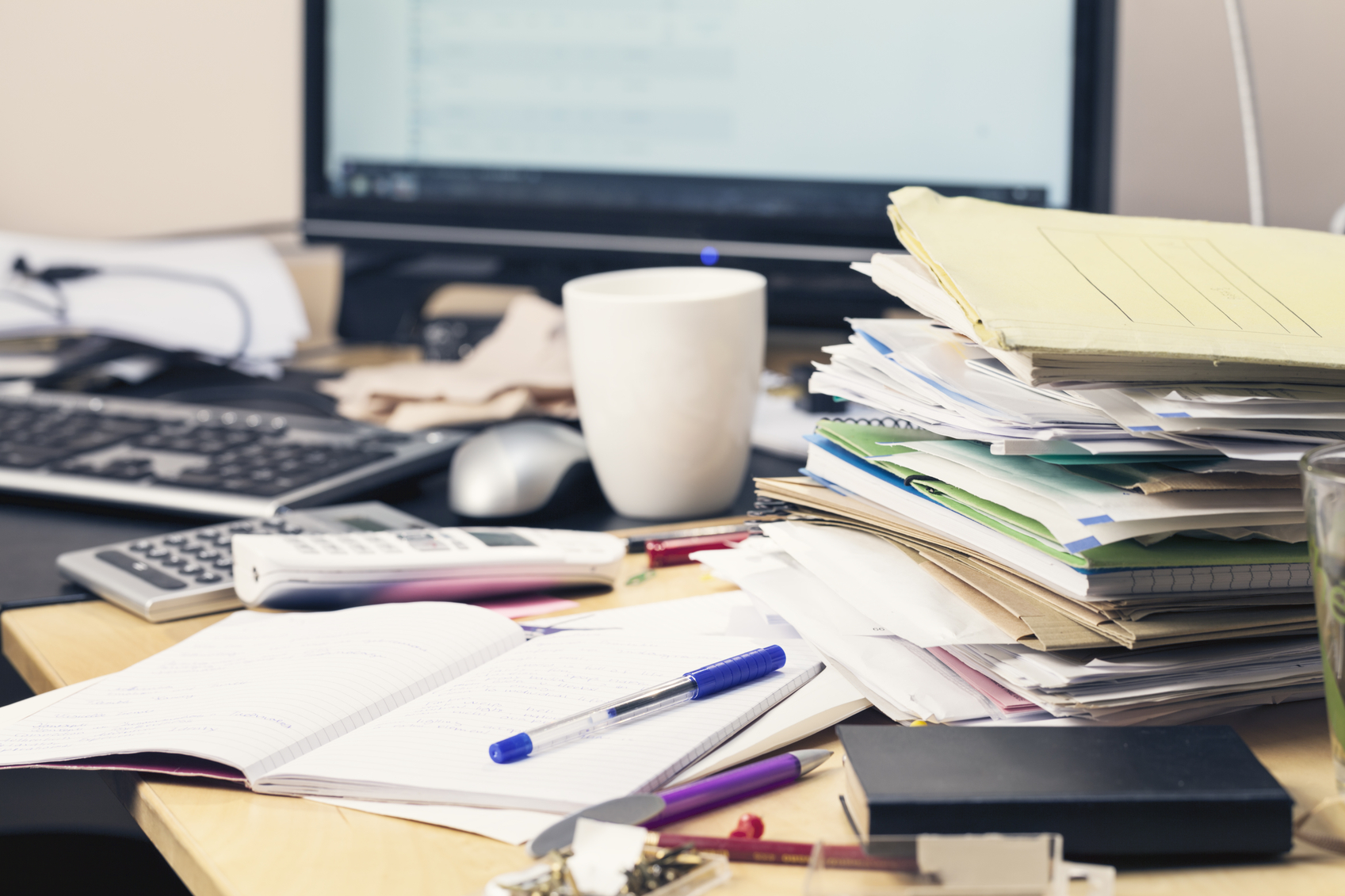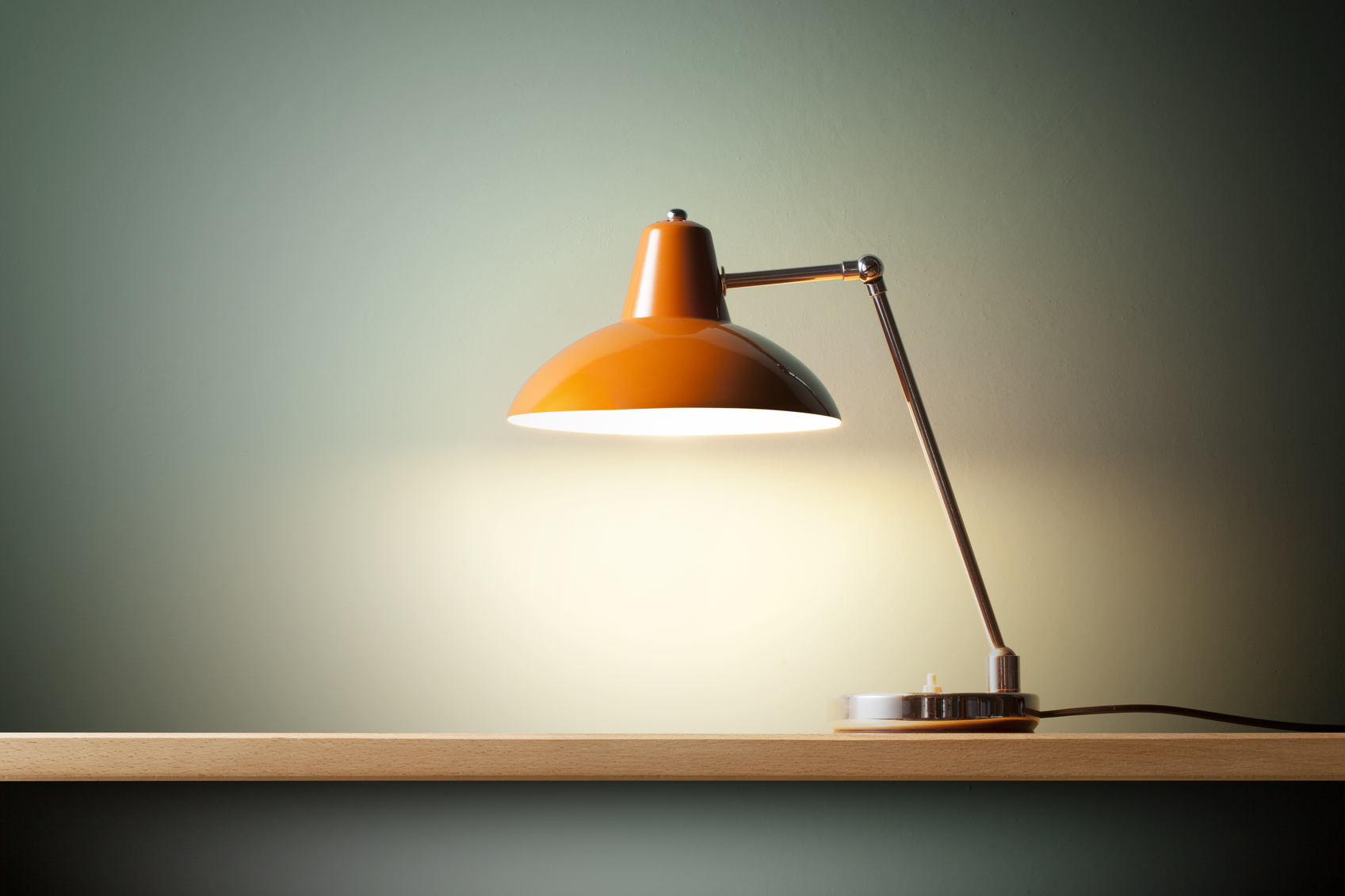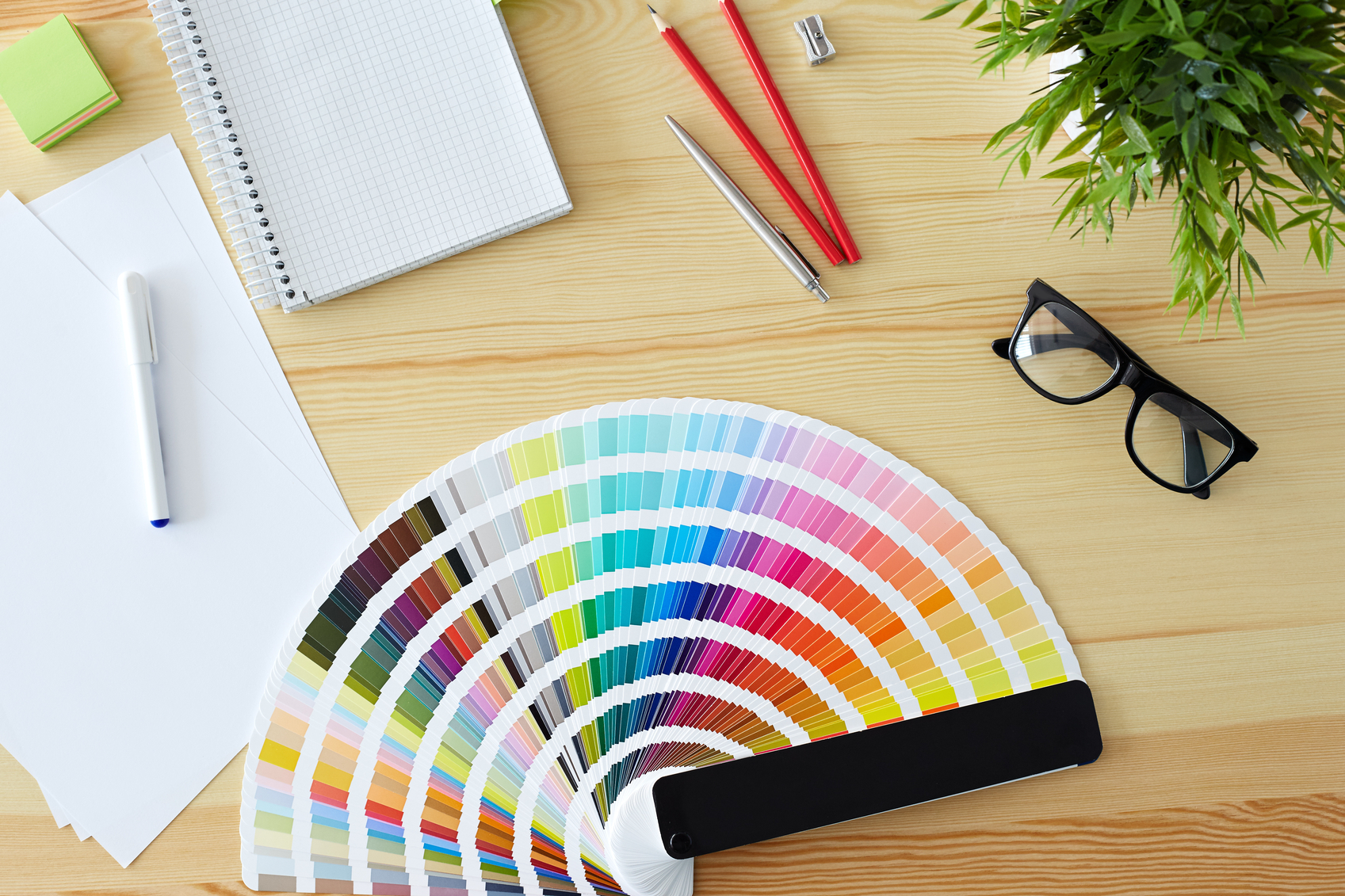The way you set up your workspace can impact your productivityjust as much as other factors including sleep,technology, organizational strategies and business tools.
|Scientists have completed endless fascinating studies about howa variety of stimuli that impact the senses can either ramp upproductivity or kill it.
|You can harness these known stimuli to set yourself up to bemore focused and efficient.
|Whether you work in an office or at home, check out these sixtips to optimize your work environment for productivity.
|| Cut theclutter
Cut theclutter
A quote attributed to Albert Einstein says, “If a cluttered deskis a sign of a cluttered mind, of what, then, is an empty desk asign?”
|Building on that, a popular notion has evolved that a cluttereddesk is a sign of brilliance and extraordinary creativity.
|But clutter can also be a time waster when you can’t find thefile you need or the phone number you scrawled on a scrap of paperlast week. In fact, researchers at the Princeton University NeuroscienceInstitute studied the impact of clutter on productivityand found that clutter creates multiple stimuli in the visual fieldthat compete for the brain’s attention. The limited processingcapacity of the visual system can’t keep up, eventually leading todifficulty focusing.
|The solution? Take a page from the KonMari Tidying Up movement. If youdon’t love it, get rid of it. Create an organized, tidy workspacethat will allow your eyes and brain to focus on the task athand.
|| Lookto the light
Lookto the light
If you’ve worked in an office building, you’ve probably spent alot of time under glaring, industrial fluorescent lights. Butscience shows that lighting can have a major impact onproductivity. If you work at home, you can choose the best lightingfor your workspace, but even if you work in an office, you cantweak the lighting in your workspace to improve not onlyproductivity but also your health.
|Natural light is the best light source for productivity andhealth, according to a study published in the Journalof Clinical Sleep Medicine. Working near a window correlatedwith better sleep and a propensity to get more exercise for studyparticipants. If you haven’t reached the status needed to earnyourself an office with a window, the study researchers adviseusing a desktop light box, increasing the intensity of overheadlights, or simply taking breaks throughout the day to spend timenear a window or step outside for a few minutes.
|Another lighting strategy that could yield better productivityis using blue light that put out shorter-wavelength blue hues thatprovide a natural wakening effect and could help improveperformance on important tasks. With any lighting choice, it’simportant to make sure to limit glare that can be hard the eyes,ultimately decreasing productivity.
|| Createcolor
Createcolor
The psychology of color has been used in marketing for decades.Restaurants look for appetite-stimulating colors to use in theirdécor like yellow and red. Therapy offices and hospitals often lookto calming blue hues.
|So what colors are best for increasing productivity in theworkplace? A Universityof Texas studytook an extensive look at the effect of color onperformance in the workplace and found that the plain white andbeige palate often used in traditional office buildings inducefeelings of sadness and depression. Colors abundant innature, like blues and greens were found to improve focus andefficiency. Not surprisingly, red is associated with urgency andintensity, and yellow is often associated with energy andcreativity.
|| Tweak thetemperature
Tweak thetemperature
Sweating it out in a too-hot office or suffering in atooth-chattering cold office are clearly limiting factors when itcomes to productivity. According to the Societyfor Human Resource Management, workplace performanceincreases with temperature increases up to a point — 71.6 degreesFahrenheit. At colder temperatures, workers made more errors andfunctioned more slowly.
|If you are able to, set your temperature at the optimal 71.6degrees (or a temperature where your own personal productivity isat its best). But if you share an office space or can’t control thetemperature in your work environment, dress in layers or have asweater handy so you can regulate your own temperature.
|| Bring theoutside in
Bring theoutside in
Office and workspaces in many cases are the exact opposite ofbeing out in nature. But researchshows that bringing some of that outside indoors can helpboost productivity. Adding plants to your office or workspace canincreased productivity by as much as 15 percent, the researchfound. Having plants in the work environment is associated withbetter air quality, higher levels of concentration, lowerabsenteeism and increased workplace satisfaction.
|Office plants that are idealworkplace companions include Philodendrons, ferns andsucculents.
|| Getcomfortable
Getcomfortable
Nothing will derail productivity like being uncomfortable,whether it’s a chair that leads to back pain or computer keyboardthat causes achy fingers and hands. Making sure you have the rightequipment to do your job functions comfortably will have a dramaticimpact on your level of productivity.
|Improving your office comfort may be as simple as making sureyour chair is adjusted properly so you are at eye level with yourcomputer monitor. Or it might mean investing in a differentkeyboard or mouse, or even a sit/stand desk.
|ErgonomicsPlus lists a variety of workspace modifications that canimprove workplace comfort along with ideas about actions you cantake to improve physical comfort in the office, like taking breaksand doing stretches.
|Complete your profile to continue reading and get FREE access to CUTimes.com, part of your ALM digital membership.
Your access to unlimited CUTimes.com content isn’t changing.
Once you are an ALM digital member, you’ll receive:
- Critical CUTimes.com information including comprehensive product and service provider listings via the Marketplace Directory, CU Careers, resources from industry leaders, webcasts, and breaking news, analysis and more with our informative Newsletters.
- Exclusive discounts on ALM and CU Times events.
- Access to other award-winning ALM websites including Law.com and GlobeSt.com.
Already have an account? Sign In
© 2024 ALM Global, LLC, All Rights Reserved. Request academic re-use from www.copyright.com. All other uses, submit a request to [email protected]. For more information visit Asset & Logo Licensing.









